No one is mentioning how to sterilize cloth masks.
A person breathes into a cloth mask for four hours and there is now an active colony of bacteria thriving in this warm, moist environment.
People are going to get sick from re-using these disposable cloth masks -from their own bacteria.
My mail carrier thought washing with a load of laundry was sufficient.
It’s not.
Your hot water heater does not get hot enough to kill bacteria, let alone virus exposure.
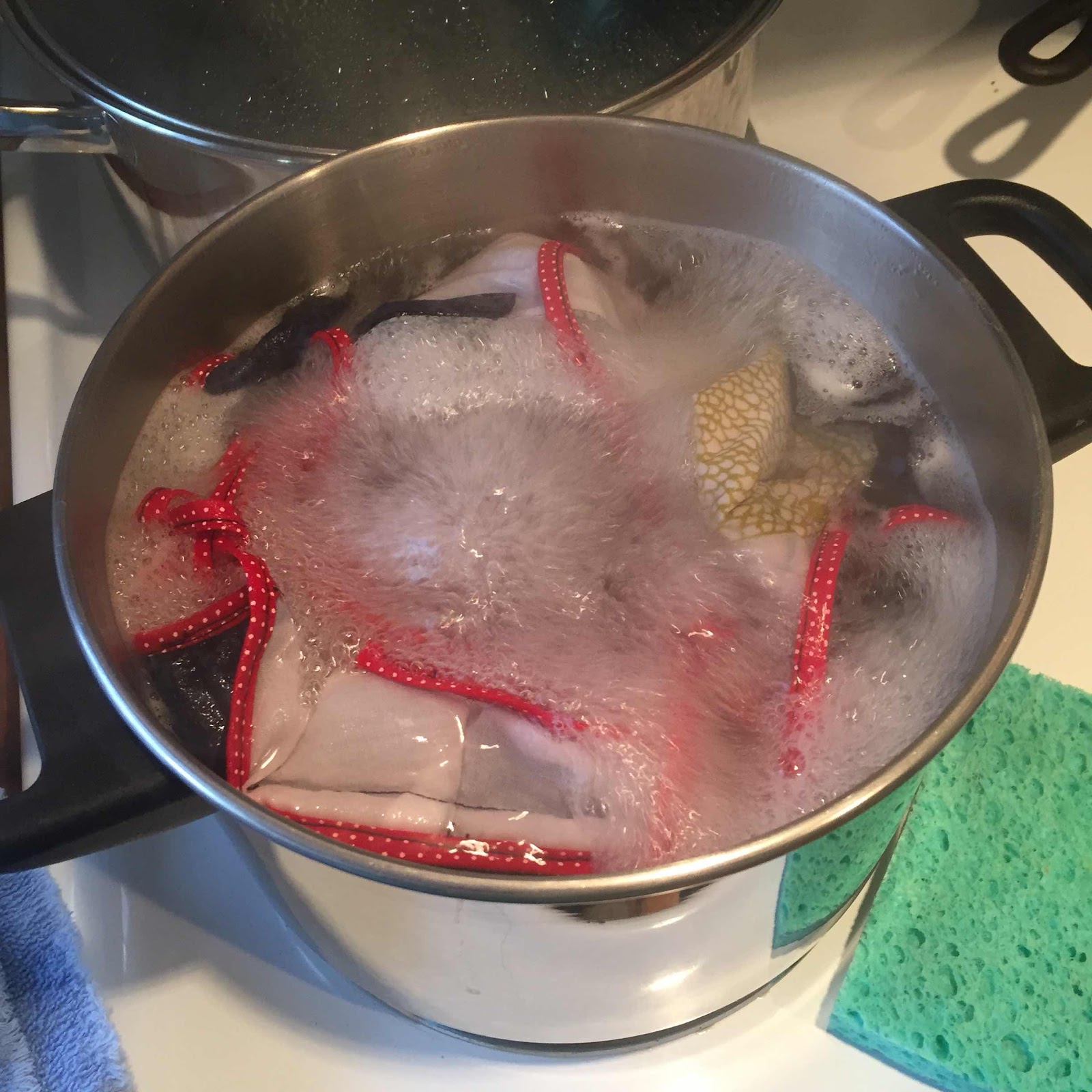
You must boil your cloth masks for ten minutes.

Mask pattern from “For a nurse, by a nurse” on Instructables. Fast sew, good coverage, used 8” pipe cleaner, doubled over and twisted on itself, for nose coverage. This pattern is designed to fit over a 95 mask for extra protection. It fits nice and doesn’t make me sweat as much. Easiest for production sewing.
You must boil your cloth masks for ten minutes.
Another method uses your oven for 30 minutes at 158’f. This only works if you have a digital temp gauge. I don’t. Higher temps may cause cotton to burn.
Lots of microwave misinformation out there too. You’re safest if you use 100% cotton. Most home sewists are using polyester threads which melt at lower temps than cotton, causing items to burst into flame in microwaves. ( anyone make potato bags?)
For those of you who can veggies and fruit? You are familiar with basic sterilization techniques. Boiling water bath, pressure cooker, etc.
You must boil them.
Mask pattern from “For a nurse, by a nurse” on Instructables. Fast sew, good coverage, used 8” pipe cleaner, doubled over and twisted on itself, for nose coverage. This pattern is designed to fit over a 95 mask for extra protection. It fits nice and doesn’t make me sweat as much. Easiest for production sewing.
Before sewing bias tape on bottom, I tucked pipe cleaner piece up at top-center and sewed a channel to keep it in place. It survived boiling just fine.
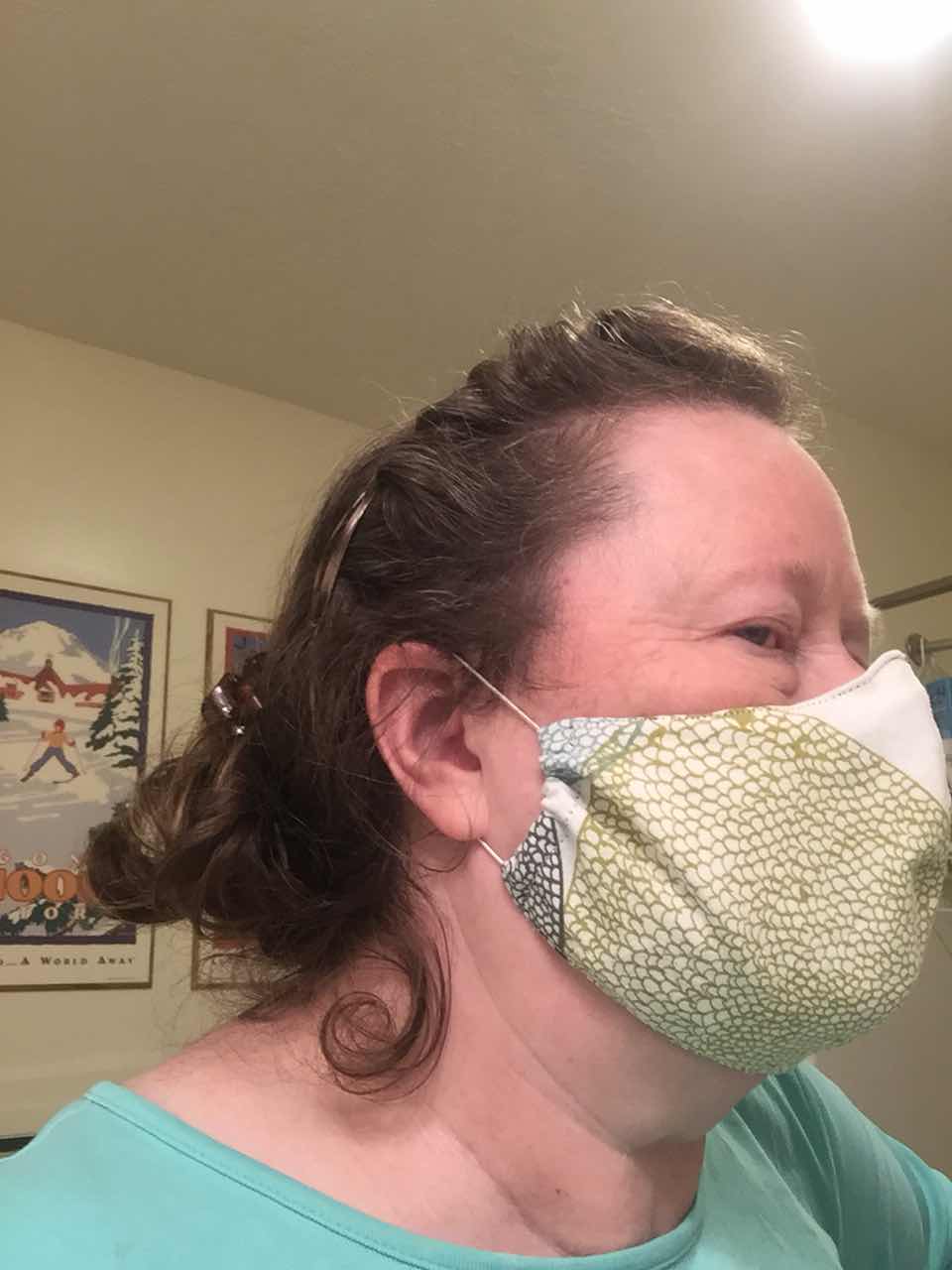
“Craft Passion” mask.
“Craft Passion” mask.
Elastic has to go.
Most sewists do not know elastic contains latex, which most health professionals are allergic to.
It did survive my boiling but eventually breaks down.
Ditch the elastic.
Alternative is to use shoe lace-type length 44”+.
There are channels at sides with this mask to run tshirt tubing, shoelace, or cording through. Push cord thru bottom of channel up to the top, making a loop over to other side, running cord from top and out the bottom.
Loop fits over top of head, ties are tied at neck.
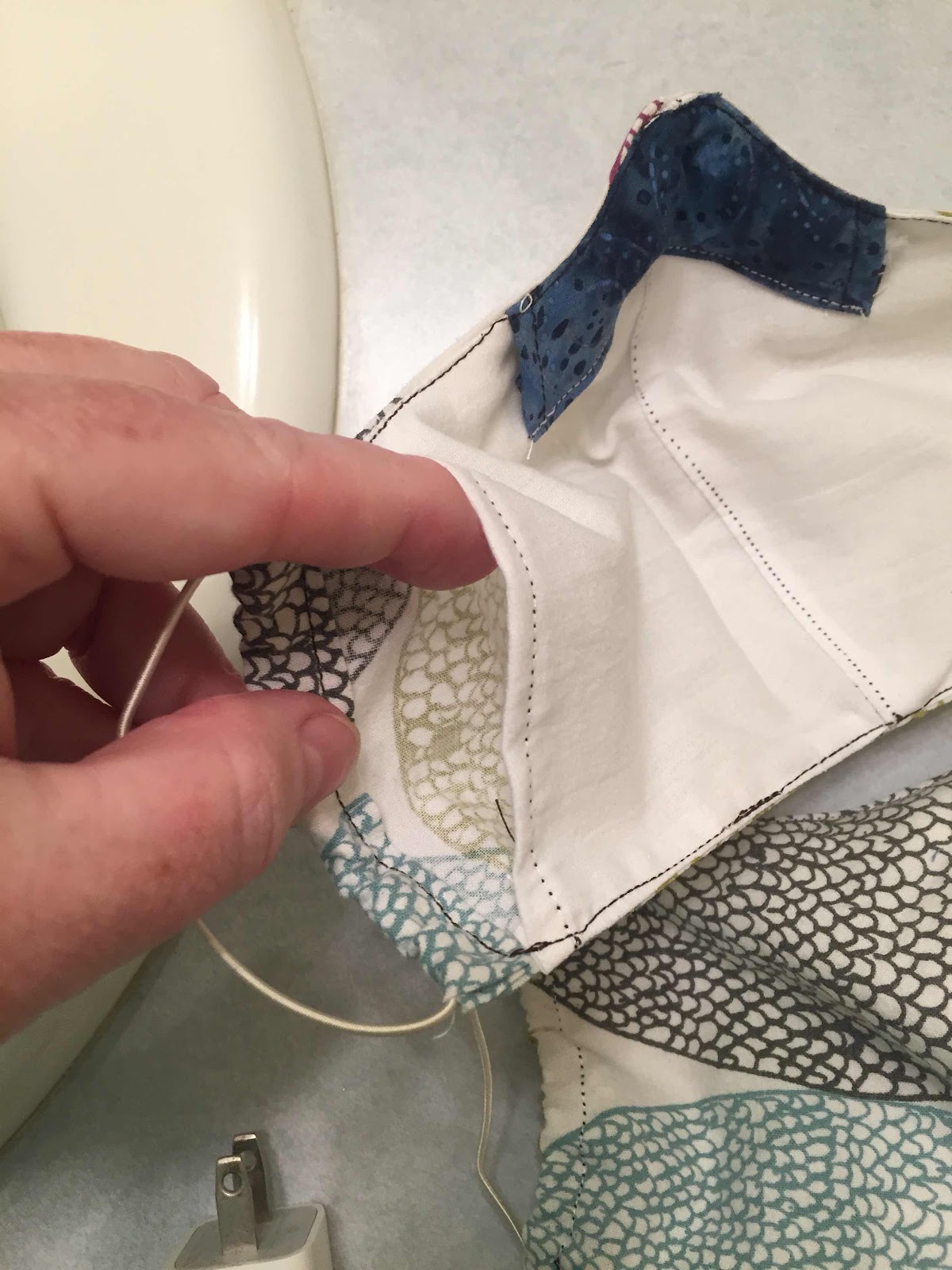
This Craft passion mask is a longer sew. Fits nice, and magically creates this pocket to insert further protection material, such as vacumn cleaner bag micron filter material. It looks the most trendy, but I got hot immediately. Fog up the glasses hot.
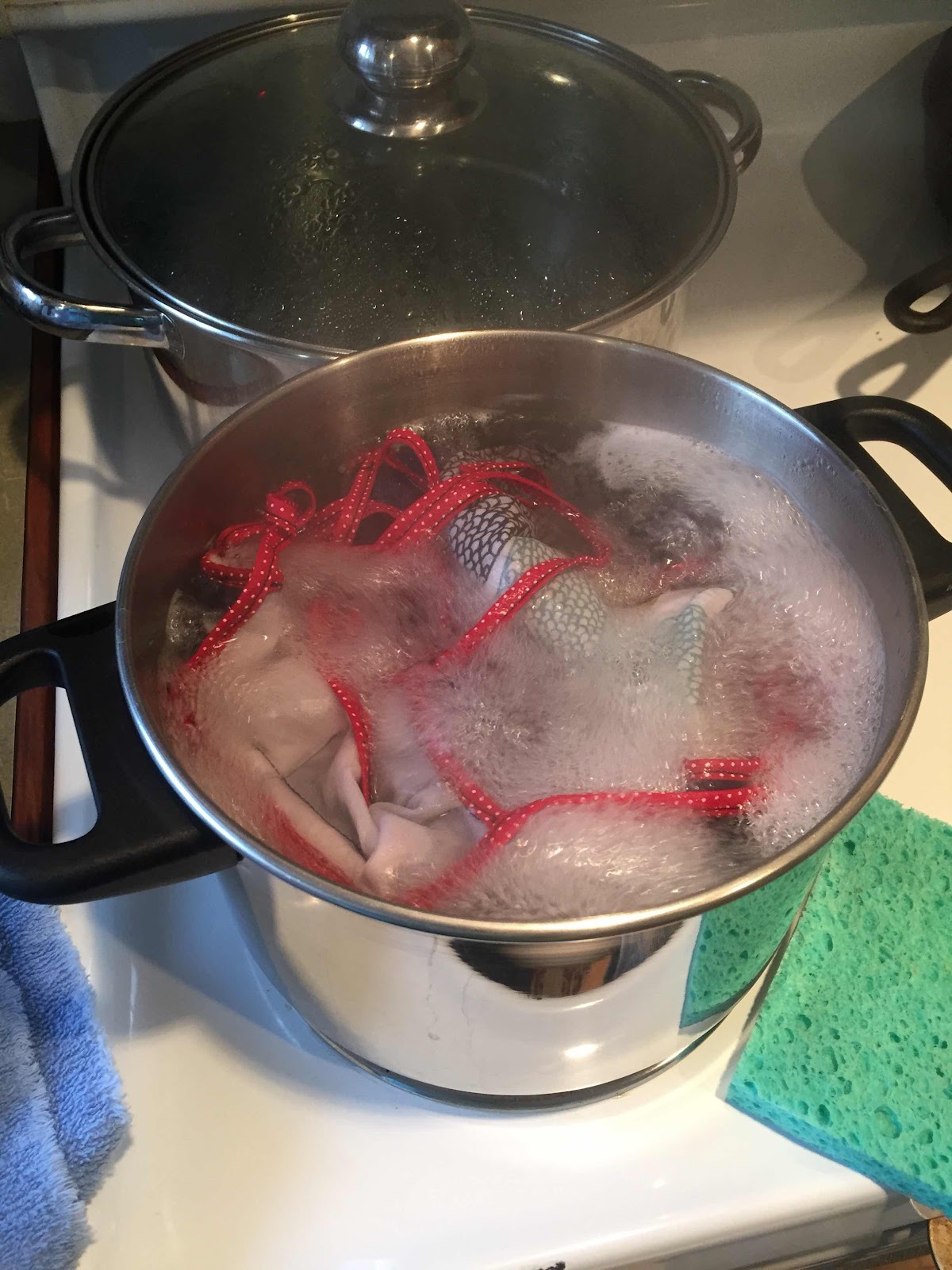
This Craft passion mask is a longer sew. Fits nice, and magically creates this pocket to insert further protection material, such as vacumn cleaner bag micron filter material. It looks the most trendy, but I got hot immediately. Fog up the glasses hot.
These home-sewn masks are disposable.
Period.
Stop sending out un-sterilized masks. Unless they are going to a medical facility that utilizes lasers, autoclaves, or whatever to sterilize. Most people do not know how to sterilize at home anymore. They will continue wearing this mask for days on end if you do not educate them. Not to mention the bacteria that is on our hands as we sew these masks.
People deserve to have a clean item next to their mouth and nose.
Think of sneezing and wiping your nose with a tissue. Letting the tissue dry and re-using. Ick.
People deserve to have a clean item next to their mouth and nose.
Think of sneezing and wiping your nose with a tissue. Letting the tissue dry and re-using. Ick.
Pre-wash your fabrics. No one wants to get sick breathing in the chemical finishes we have on quilting cotton.
Learn to sterilize.
Masks should be boiled prior to giving them out.
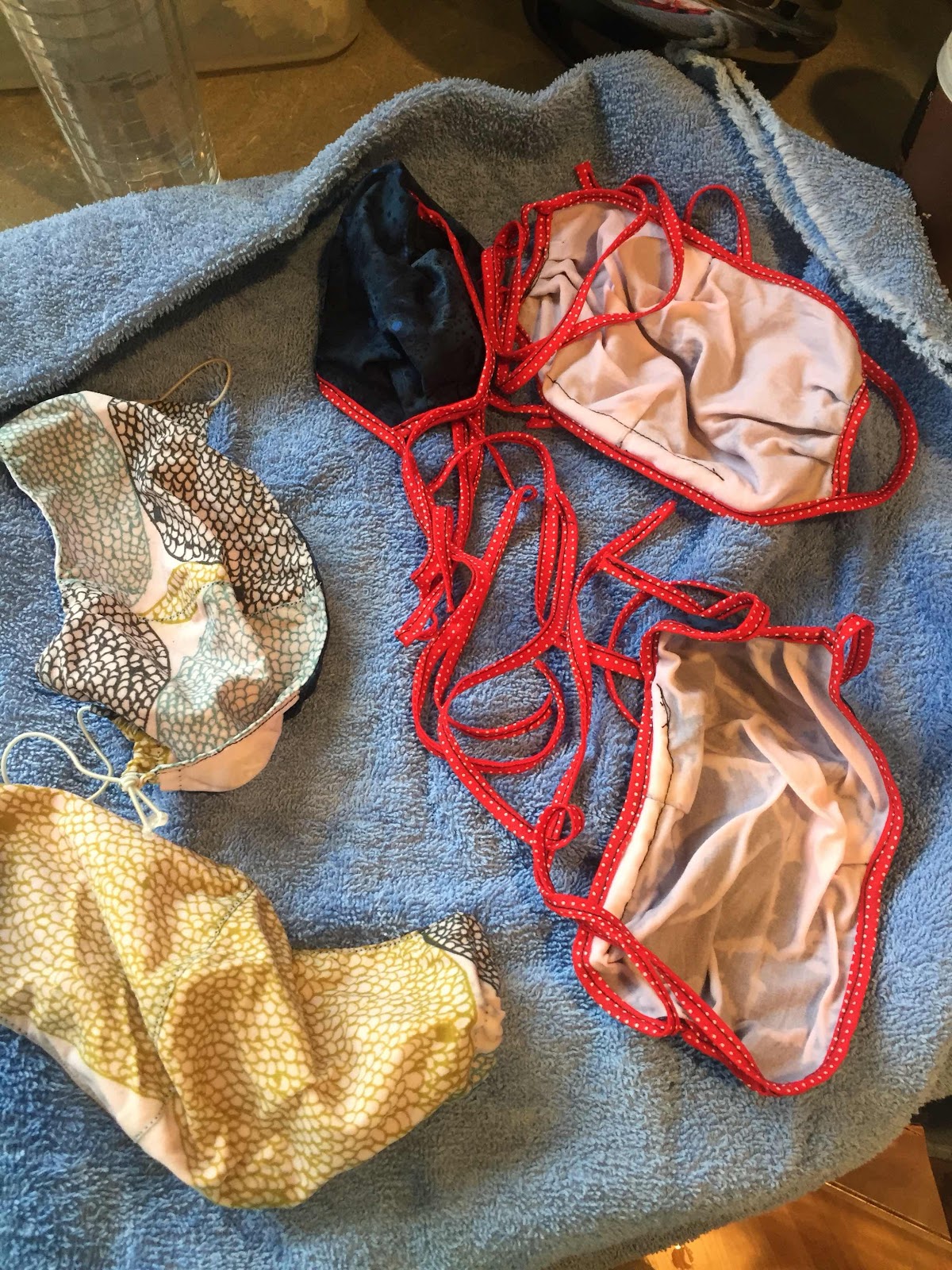
To dry, I used a clean, dry towel and tongs to start the drying process. The tongs I used were boiled as well. I laid a towel on top until they were mostly drained, then used tongs to set them on a clean, new, dry towel.
To dry, I used a clean, dry towel and tongs to start the drying process. The tongs I used were boiled as well. I laid a towel on top until they were mostly drained, then used tongs to set them on a clean, new, dry towel.
I’m still researching best practices. Clean hands during construction helps too.
Please don’t ask me to sew these for you. I have plenty of requests.
If you can't sterilize them, I'm betting the people you hand them out to won't either. Bacteria growing on your cloth mask might be more scary than Covid19.
Also advise, clean hands before taking mask off, clean hands again. Dispose of mask or set aside to boil clean for next wearing time.
Which means I gave my mail carrier five masks so she can trade off.
If you can't sterilize them, I'm betting the people you hand them out to won't either. Bacteria growing on your cloth mask might be more scary than Covid19.
Also advise, clean hands before taking mask off, clean hands again. Dispose of mask or set aside to boil clean for next wearing time.
Which means I gave my mail carrier five masks so she can trade off.









Cotton fabrics become porous with proper sterilization. Estimating 5-10 uses.
ReplyDeleteBleach: 1/3 cup diluted in 1 gallon water x amount for washer load. Boiling is faster and less of a energy footprint.
ReplyDelete